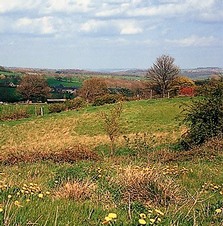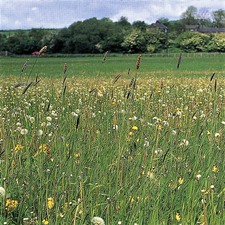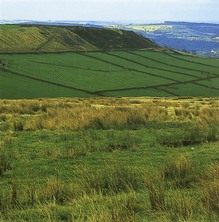

Biodiversity
Action
Plan
Grasslands. Meadows of waving grass dotted with colourful wild-flowers and humming insects; pastures of tussocky grass on the upland-fringe: grasslands can contain a rich diversity of plant species, supporting invertebrates, mammals and birds. However such grassland is the habitat that is most rapidly being lost.
Priority habitat details
All unimproved and semi-improved grasslands in Barnsley are a priority for conservation.
Local grassland priority habitats include:
Lowland dry acid grassland
Lowland neutral grassland
Floodplain grazing marsh
Purple moor-grass and rush pasture
These are all national (UK BAP) priority habitats.
Biodiversity within grassland is often increased by the presence of such areas as impeded drainage, flushes, springs and ditches or boulders, scree and rubble (e.g. from collapsed dry stone walls).
Information is provided on other pages on the individual grassland priority habitats and on amenity grassland and verges being managed for biodiversity. See links below.



Semi-natural grassland,meadows and pastures that have been subject to regular management by traditional mowing and grazing but without artificial ‘improvement’ with fertiliser, herbicides, or ploughing and re-seeding, are the richest in the flora and fauna they support. However farmers have been under pressure to get more agricultural products out of their land
As well as farmland, grassland can also be found in glades in woods and within urban areas as parks and green spaces, on roadside verges, and indeed on former industrial land.
Birds and small mammals forage for insects and seeds in grassland, and use it as shelter and cover. In turn these attract birds of prey.
In Barnsley, the main grassland types are Acid Grassland, Neutral Grassland, Floodplain Grazing Marshes and some Rush Pastures. See links in sidebar.
Although the tussocky vegetation and bare ground of Acid Grassland
are relatively poor in plant diversity they are important for birds and invertebrates. The same is true for Rush Pasture.
Unimproved Neutral Grassland or ‘Lowland Meadow’ priority habitat has a high proportion of broad leaved plant species. This gives rise to a colourful wildflower sward in summer, heavily used by insects such as bees and butterflies. This priority habitat may be seasonably inundated when on floodplains.
Floodplain Grazing Marsh in the Dearne Valley however retains standing water in subsistence flashes and excavated ditches and scrapes within its wet grassland. It is considered here in the wetland section.
Amenity Grasslands and Verges are not priorities for conservation in the usual sense, but they can be managed to benefit biodiversity. They are therefore included in this local Biodiversity Action Plan.

Grasslands